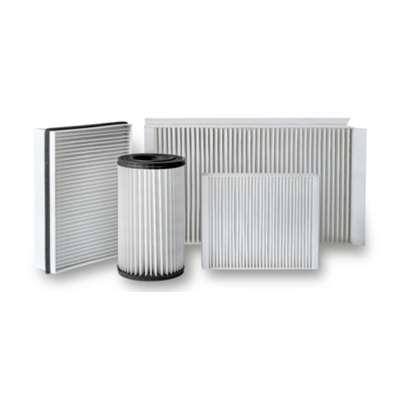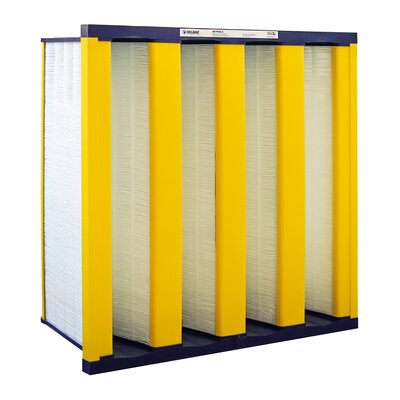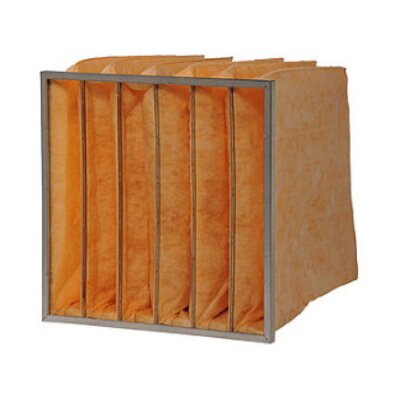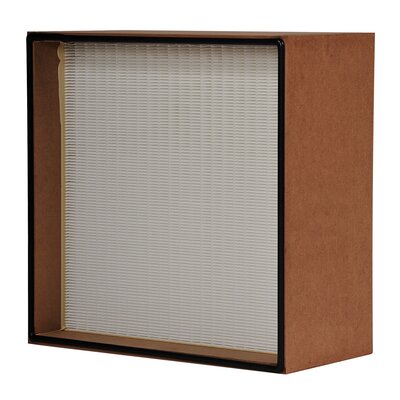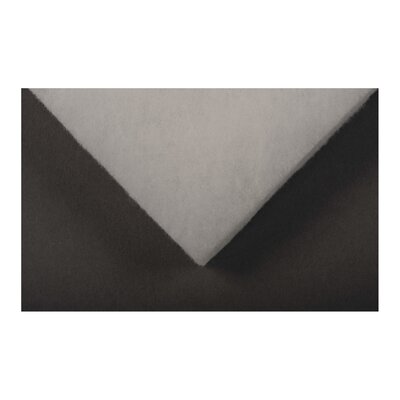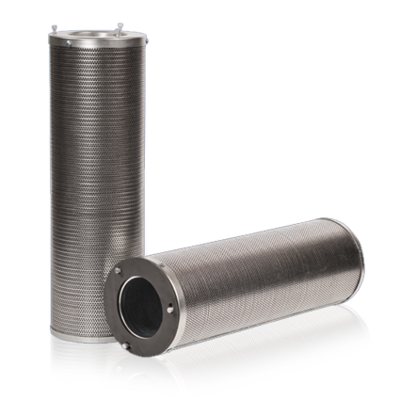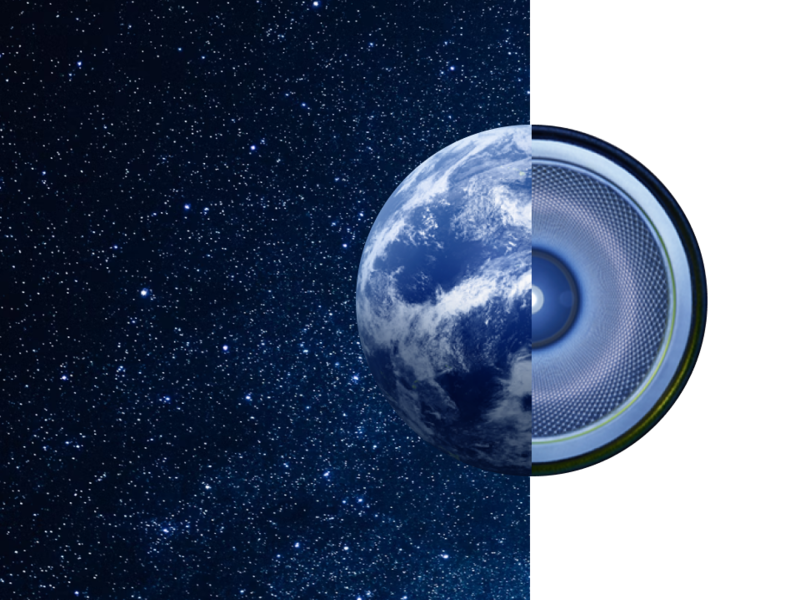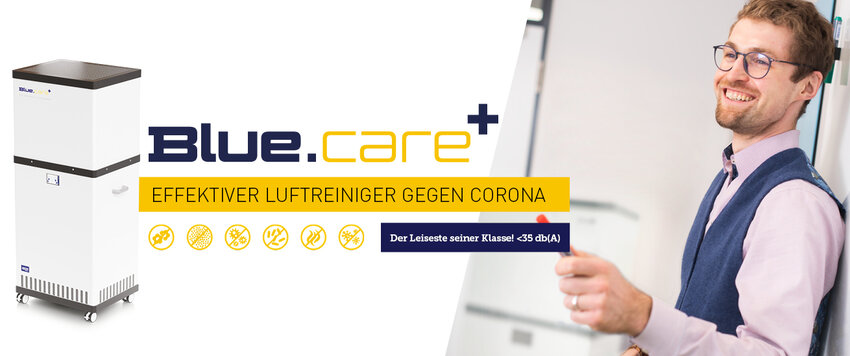
Whether in a classroom, classroom or seminar room, doctor's practice, office or restaurant - the Blue.care+ antiviral air purifier ensures clean healthy indoor air everywhere. The latest development from the expert in filter systems, Hengst SE, has been tested by scientists at the Westphalian Wilhelms University in Münster and is already in use in hundreds of schools, daycare centers, medical practices, offices and restaurants.
After only 10 minutes, the virus load of the room air drops by 50%, after only 30 minutes even by 90% (room size 80 m²) at an air exchange rate of 6 times per hour.
The HEPA class H14 combination filter achieves a filter efficiency of ≥ 99.995 %. Fine dust, aller - gene, bacteria as well as smallest viral contaminated aerosol droplets are reliably filtered out of the room air. And this without the use of UV-C irradiation.
The noise level in continuous operation at 800 m³/h nominal volume flow is below 35 db(A). The Power Diffusor Pro distributes the intake air evenly towards the room ceiling without any disturbing draught effects. This ensures the best possible air circulation throughout the entire interior. + The robust, flow-optimized design and energy-efficient technology guarantee safe continuous operation and low energy consumption.
The air purifier is controlled via a clear display. Here, the room size can be conveniently entered, which automatically sets the optimal performance of the purifier, the air exchange rate can also be adjusted at any time (a 4-fold exchange rate per hour is recommended). A weekly schedule can be programmed in the menu, as well as a silent or booster function and an overrun time can be activated. The filter saturation as well as the room air quality are displayed and the device can be controlled via a weekly schedule. The air purifier also has a daylight sensor and a timer.
Online-Shop Contact
Advantages
Blue.care+ Air Purifier against Covid – Your customer benefit at a glance:
The HEPA class H14 combination filter effectively removes ≥ 99.995% of airborne viruses and aerosols.
Fine dust, allergens, bacteria as well as the smallest viral contaminated aerosol droplets are reliably filtered out of the room air.
Without the use of UV-C irradiation.
Reduction of virus load by >90 % after 30 minutes (room size 80 m²). At an air exchange rate of 6 times per hour.
The noise level in continuous operation at 800 m³/h nominal volume flow is <35 db(A) (as of October 2022).
The Power Diffuser Pro distributes the intake air evenly towards the room ceiling without any disturbing drafts. This ensures the best possible air circulation throughout the entire interior.
The robust, flow-optimized design and energy-efficient technology guarantee safe continuous operation and low energy consumption.
Made in Germany.
FAQ
Here you will find (almost) all the answers to your questions at a glance:
What are aerosols?
Will airing become superfluous with the Blue.care+ air purifier?
How effective is the antiviral air purifier?
Can an indirect infection be prevented with the Blue.care+?
Can use of the device release me from regulatory requirements?
How high must the air exchange rate of an air purifier be?
What kind of filter element is used?
Why is a HEPA filter of filter class H14 used?
What is a HEPA filter?
What exactly does H14 mean and does the HEPA H14 filter really only filter particles from 0.1-0.3 µm?
Why does the Blue.care+ not use UV-C radiation or heat in the device to destroy viruses?
How often must the filter element be changed?
How do I change the filter?
What do I have to pay attention to when changing the filter and how must the installed filter be disposed of?
How much space does the Blue.care+ need and where do I have to place the device?
How is uniform clean air distribution ensured?
I have several Blue.care+ in use, what is the best way to distribute them in the room?
Can I change locations quickly with the Blue.care+?
What do I have to consider during commissioning?
Is overnight operation necessary?
Product variants
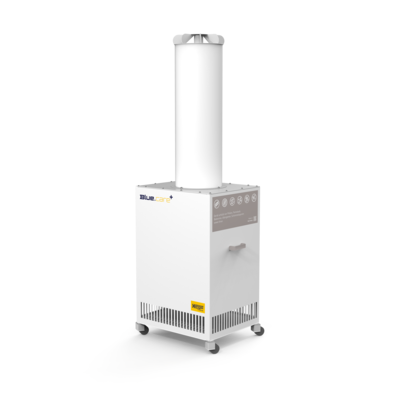
Blue.care+ (Variante L)
Was sind die Vorteile eines großen Luftreinigers gegenüber eines kleinen Luftreinigers?
- Konstruktionsbedingt ist bei kleineren Geräten die Luftwechselrate deutlich geringer als die empfohlenen 6 x pro Stunde, daher eignen sie sich nur für sehr kleine Räume. Siehe => „Wie hoch muss die Luftwechselrate des Luftreinigers sein?“.
- Ein kleineres Gerät stößt die gereinigte Luft auf Körper- oder Kopfhöhe oder gar bodennah aus, die entstehende Zugluft wird als unangenehm empfunden (direktes Anströmen, Zugluft).
- Nur in einem großen Gerät haben die wichtigen HEPA-Filter eine ausreichende Filterfläche, um einen langfristigen Schutz ohne ständigen Filterwechsel zu gewährleisten.
- Um eine geringe Lautstärke sicherzustellen, muss eine ausreichende Schalldämmung verbaut sein, die nur in größeren Geräten Platz findet.
- Aus dem gleichen Grund setzt man in einem großen Gerät einen entsprechend leistungsfähigen Ventilator ein, den man in dem angegebenen Nennbereich des Volumenstroms nicht voll auslasten muss.
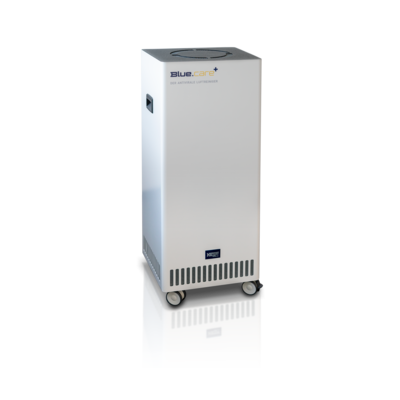
Blue.care+ (Variante M)
Test passed! Room air in. Clean air out.
The Blue.care+ features a HEPA filter class H14 and is equipped with a nominal volume flow of 1,150 m³/h. This means that particle reductions of between 94 and 95 % were achieved under reproducible conditions in a practical test by an independent accredited test laboratory. This was achieved with the relevant particle size of 0.5 µm. The Blue.care+ [to the test report] thus proves that it is an effective aid in reducing the risk of corona infection.
